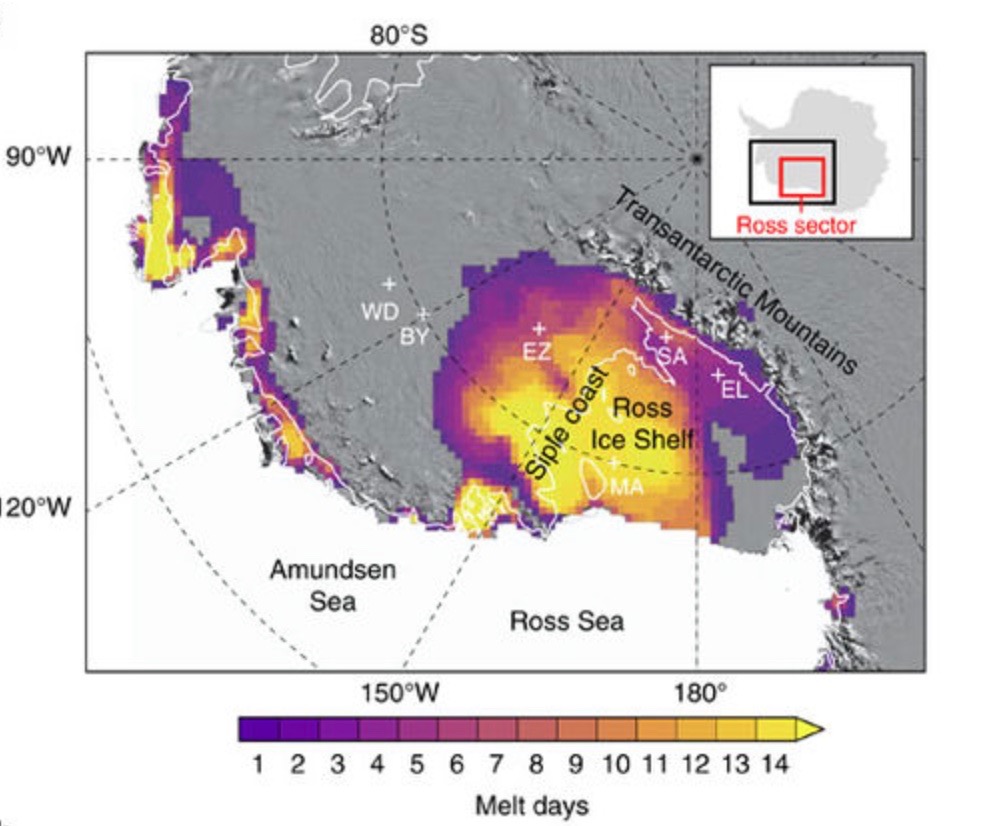 A recent report in Nature has presented evidence for a link between an extended period of surface melt on the Ross Rea sector of the West Antarctic Ice Sheet (WAIS) and a strong El Niño event which resulted in warm marine air being directed to the sector.
A recent report in Nature has presented evidence for a link between an extended period of surface melt on the Ross Rea sector of the West Antarctic Ice Sheet (WAIS) and a strong El Niño event which resulted in warm marine air being directed to the sector.
The authors point to the importance of understanding the mechanisms involved to be able to gauge the future impacts on WAIS. Currently model results are inconclusive as to whether surface melting will make a significant contribution to WAIS instability in the twenty-first century. However, the number of strong El Niño events is projected to increase through the century. Studies of this type could therefore be a precursor to the future climate of West Antarctica.
Julien P. Nicolas, Andrew M. Vogelmann, Ryan C. Scott, Aaron B. Wilson, Maria P. Cadeddu, David H. Bromwich, Johannes Verlinde, Dan Lubin, Lynn M. Russell, Colin Jenkinson, Heath H. Powers, Maciej Ryczek, Gregory Stone & Jonathan D. Wille, “January 2016 extensive summer melt in West Antarctica favoured by strong El Niño”, Nature Communications 8, 2017. DOI: 10.1038/ncomms15799
